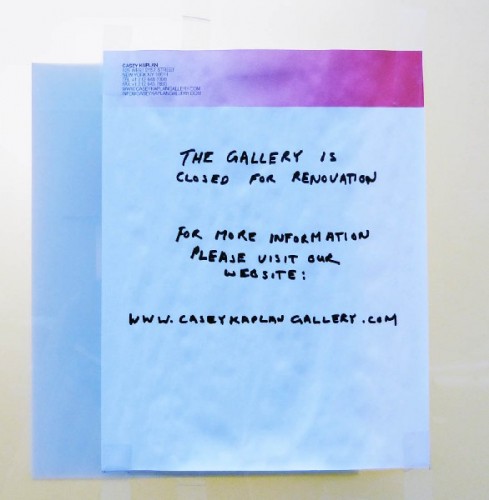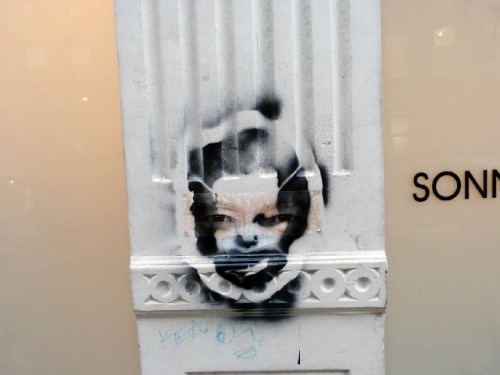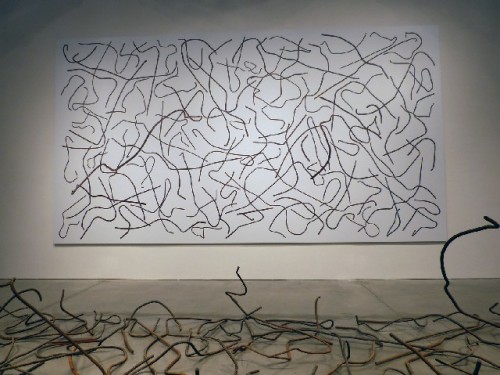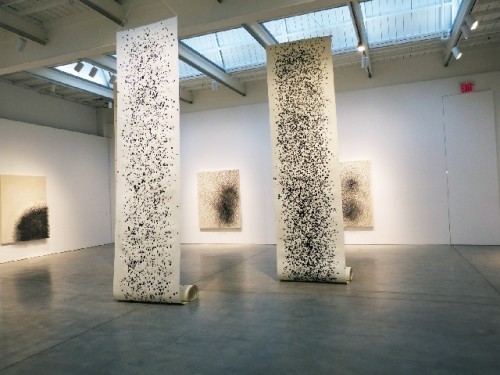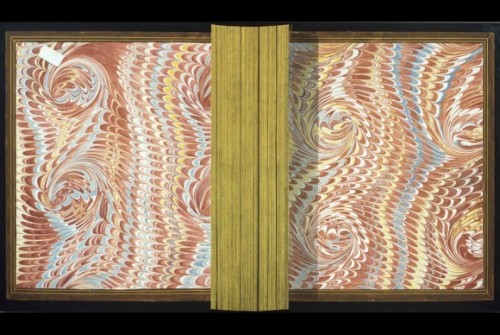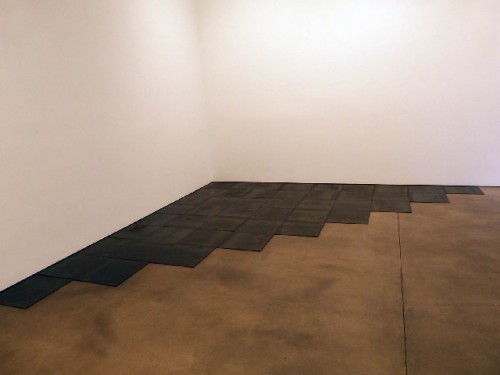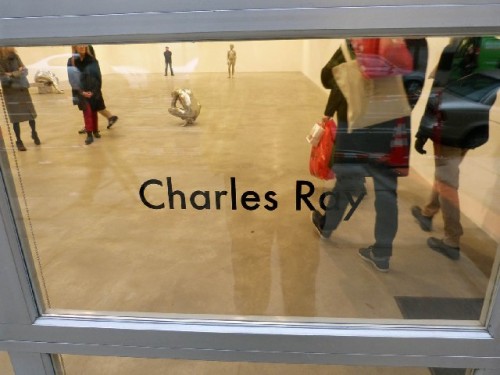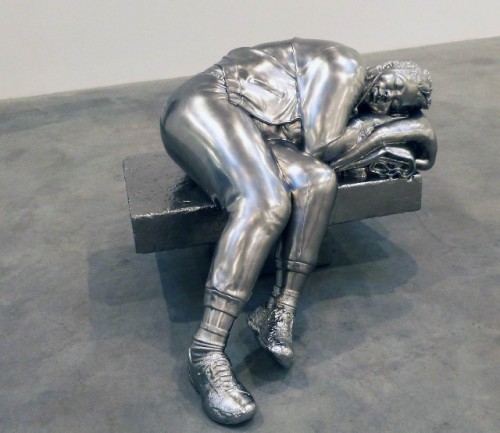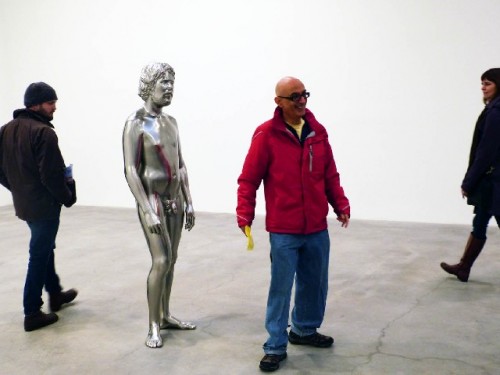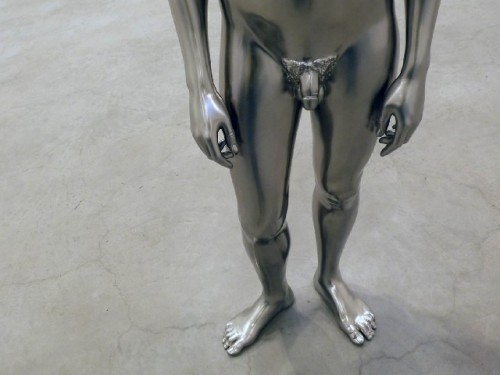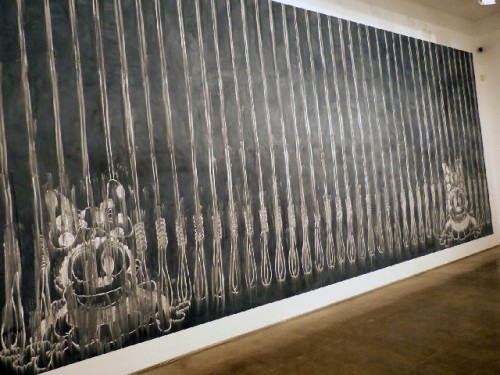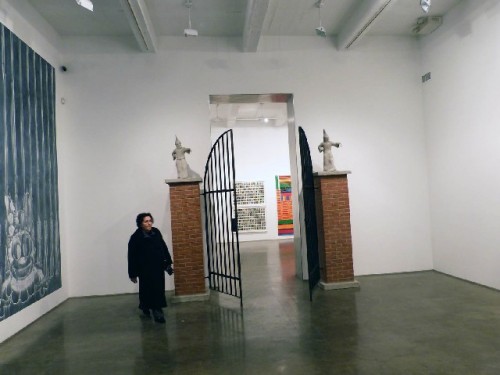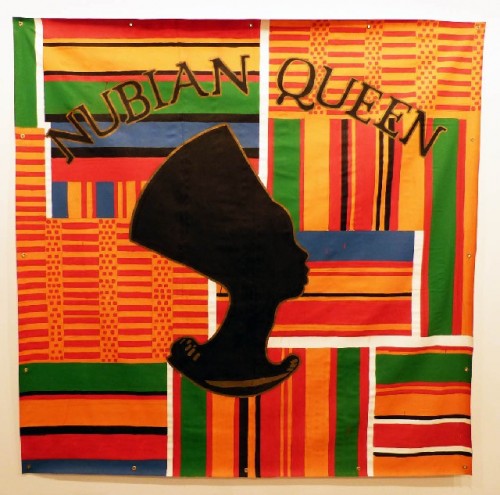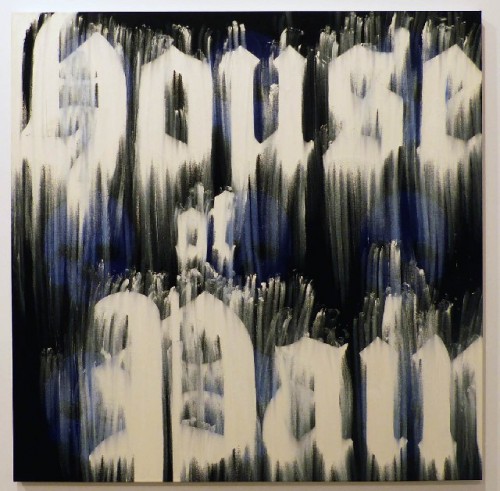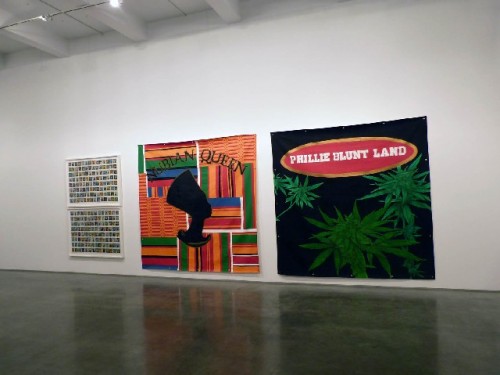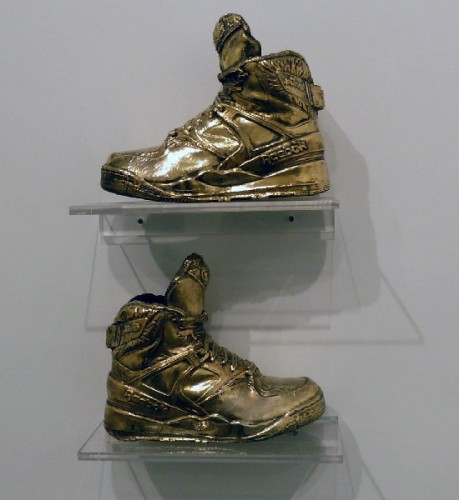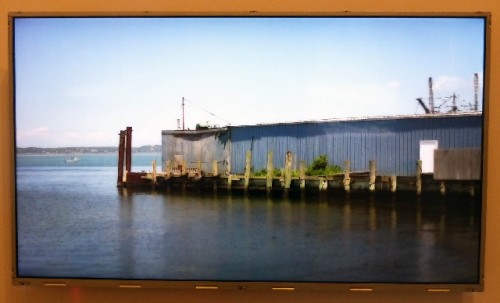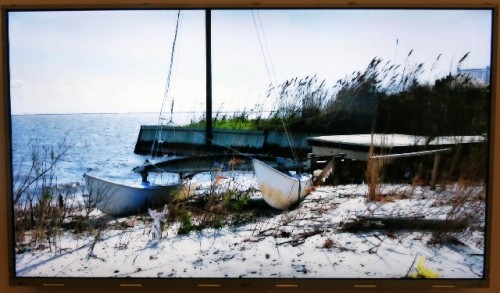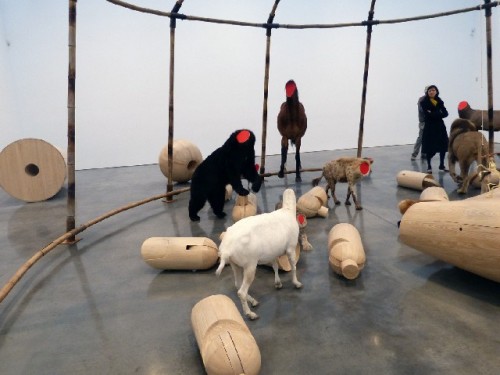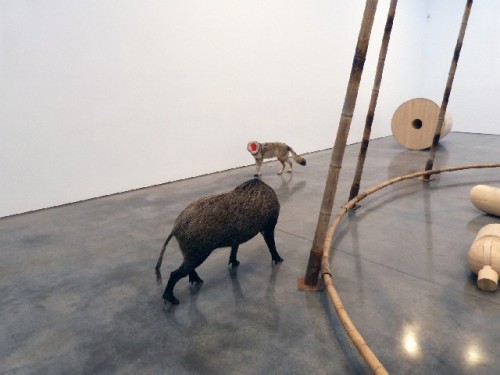Chelsea Galleries Stumble Through Holidays
Bubble Bursts Post Sandy
By: Charles Giuliano - Dec 22, 2012
Hurricane Sandy devastated New York’s Chelsea Gallery district. Hit particularly hard were the most prestigious street level venues.
The surging Hudson River flooded the area as well as wiped out basement storage areas.
Entire exhibitions were lost as well as multiple millions of dollars worth of works in basement storage areas.
This was particularly devastating as it occurred during the busy fall season leading up to Holiday tourism and the annual Art Basel events in Miami.
The art market seems to have been impacted by a perfect storm of natural disaster as well as an inevitable bursting of the bubble in the inflated value of contemporary art.
On many levels, from critics to curators and collectors, there have been angry, finger pointing exchanges of what’s wrong with contemporary art nowadays.
The most common analysis has focused on the demeaning shift from a critical discussion of aesthetics to the perceived power of a handful of mega collectors.
Stepping back, one concludes that the art world today is not much different from Wall Street or the commodities markets. The primary focus is on the bottom line. The discussion is not about the humanistic values of art but how much it is worth at auction and on the secondary market.
There has been a perception among A list collectors that there is a limitless ceiling for the blue chip artists who are considered good investments. The commodification of these artists also reveals the soft underbelly of overblown and misguided ambition and a general lack of sincerity. It has translated into the blind ambition of artists’ studios staffed with numerous assistants who fabricate the product.
We laugh up our sleeves about the factory of trolls who churned out the saccharine, kitsch of Thomas Kinkaid, The Painter of Light. But, really folks, are the assembly lines of Damien Hirst, Matthew Barney, or Jeff Koons any different?
There has been shock, dismay, and crocodile tears with the announcement that Hirst, whose auction lots have declined by a third or been bought in with no takers, is parting ways with Gagogsian Galleries. The gallery is also losing its grip on Koons, whose next show is slated for the David Zwirner Gallery, although he still has a contract with Gagogsian. It is reported that the Japanese artist, Kusama, who was recently given a retrospective by the Whitney Museum, is in the process of pulling up stakes.
Not to worry. Once the dust settles Gagogsian will prevail as one of the world’s most powerful galleries. It represents the super stars Takashi Murakami, Ed Ruscha and Cecily Brown, as well as the estates of Cy Twombly, Robert Rauschenberg and Henry Moore.
Artists like these have become so vastly wealthy and powerful that they don’t really need the mega galleries with which they split sales. Hirst, for example, went straight to auction a while back and racked up millions with not a penny going to his dealers. It was a bold move that set a new paradigm.
Those of us who care deeply about art would like to think that it entails more than money. Critics, however, have taken their lumps and been humbled long ago. The major art magazines are beholden to their advertisers. So there is little or no critical comment or bite in the mostly bland, art speak infested reviews, and fawning feature articles.
Picking up an issue of the formerly influential Art Forum, for example, is not very different from flipping through Vogue or Vanity Fair. There are some articles here and there, which most subscribers hardly bother to read. But the magazine is thick with full page ads hyping the wares for sale.
There are actually opinions expressed in the New York Times and to some extent in the New Yorker. These bastions of journalism seem to be somewhat protected from the influence of advertisers. But we have long been overly familiar with the quirks, prejudices, whims, and favorites of their critics.
One would like to think that there are a handful of critics who actually influence the art world. It’s mostly a self absorbed fantasy for these critics and their groupies.
If you want to know what’s going on the art world you have to put on comfortable walking shoes and make the rounds of museums and galleries. There is no substitute for just being there.
Our recent tour of Chelsea during the busy Holiday season was surprisingly rich with an array of compelling exhibitions. Of course, given the time of year, the galleries try to mount strong and saleable exhibitions.
Particularly if you stay on street level there are mostly blue chip artists on view.
Of course, given the flood damage, that may well change as some of the major dealers consider moving to higher ground.
For the most part, the major players were back in business. Here and there were signs of spaces under renovation, such as the venerable Sonnabend Gallery. There has been discussion that some dealers could not recover from loss of inventory as well as major costs for renovation. It’s an iffy business not well equipped to endure natural disasters or market reversals.
We have already reported in depth on the particularly interesting and important exhibitions by Ai Weiwei at Mary Boone and Gunther Uecker at Haunch of Venison.
Ed Ruscha at Gagogsian
The major exhibition at Gagosian provides an overview of the California cool school, conceptualist Ed Ruscha. The new work entails large mockups of books. With their marbleized inside covers they are relief sculptures intended to be contemplated as objects rather than read.
While there may be a brittle brilliance to the work there is always a mountain to climb in finding a visceral connection. Ideas prevail with not very seductive experiences for the eye. Given the scale and grandeur of this installation its overall impact was underwhelming.
The presence of numerous guards approaching with warnings not to take photographs was annoying. The camera was over my shoulder and not in use. It was yet another reminder that the gallery thinks of itself as a museum or a bank. The shots posted with this coverage were borrowed through a Google search.
Carl Andre at Paula Cooper
The street side gallery displayed a familiar Carl Andre motif of metal plates grouped to form a large V in a corner.
The large, vaulted inner space presented rows of large, cedar beams. There was a pleasant aroma in the gallery emitting from the wood.
There was nothing new here as the artist continues his signature minimalist approach of stacking and arranging elements such as wood, metal and bricks.
During the 1970s, the approach of not carving into or sculpting materials was innovative. Decades later the response is ho hum.
Charles Ray at Matthew Marks
It is always a welcome surprise to see new work by Charles Ray.
He started as an action/ conceptualist and has gone through many phases and morphs since then. Mostly with inventive approaches to figurative sculptures.
These have ranged from a self portrait in a bottle, to an oversized nude family group displayed in a Whitney Biennial, and a group grope for Documenta.
Here we encounter silvered, metallic, life sized sculptures. There is a crouching nude boy as well as a standing nude man. A third piece presents what appears to be an African American homeless man sprawling on a bench napping.
The figures are smooth and shiny. There is an industrial, manufactured look to the pieces. One wonders how they were created? Were they cast from life creating a mold? This notion is enforced by a clue/ detail of the hair. It is matted and lacks the required crisp texture one might expect. This suggests that a cap was place over the hair to prevent it being pulled out by removing a plaster or rubber mold.
We had a deadpan interaction with the works. As sculptures they were unremarkable in form, execution and iconography. This is consistent with Ray’s approach and it is always interesting to have an update.
Gary Simmons at Metro Pictures
The one man show of Gary Simmons, with its this and that approach, seemed more like a group show. There were samples of his work from the past decades including the signature, blackboard murals and cast metal sneakers. We also encountered some stridently graphic “paintings.” The entrance to the inner gallery was accented with a gate and strange elf like creatures as finials.
Huang Yong Ping “Circus” at Gladstone Gallery
It is interesting that the current tour of galleries included works by two contemporary Chinese masters, Ai Weiwei, and Huang Yong Ping at Gladstone Gallery.
Ping will be remembered for a stunning exhibition at Mass MoCA in 2006.
Taxidermy is a major aspect of his oeuvre.
For this installation we have a large cage containing a number of “Circus” animals.
The twist is that they are all decapitated. We see the “bloody” ends of their necks.
Other than having lost their heads the creatures maintain familiar postures.
One is encouraged to consider the irony of this large scale installation.
Peter Campus “Now and Then” at Bruce Wolkowitz Gallery
Peter Campus is regarded as a major creator in the video art movement of the 1970s.
This update is wonderfully simple, clever and enticing.
Initially, we encounter what appear to be landscape/ seascapes in light boxes. The images as such are attractive but generic. They could be anybody’s snapshots of nature.
But, look again.
On closer observation we begin to notice the movement of water and the changing of light and clouds.
Of course, we are all familiar with this motif in the cliché of a video of burning logs in a fireplace or Chinese landscapes in a restaurant with their view of waterfalls.
Here, however, Campus presents it as high art.
How I would love to have one over my mantelpiece. If I had one. Or could afford these works by Campus.
Coming soon to a Walmarts near you.
Just kidding.


